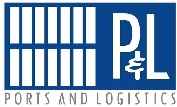<<Container lines are well known for making almost any concession to get or keep a customer, from dropping rates to offering extended free time on terminals, extended use of containers, or late cutoffs at gates. But they will have no room to budge on the requirement that a certified weight based on an actual measurement accompany every container tendered to the carrier as of July 1.
“It goes to the liabilities associated with being an ocean carrier,” Ron Widdows, the former APL CEO who is now a consultant and chairman of the World Shipping Council, the trade group representing container lines, told JOC.com in an interview on Tuesday. That liability for non-compliance with the requirement he said, is “too large to knowingly not comply simply because the enforcement regime may not be there uniformly around the world, or that you have a desire to be helpful to your shipper.”
He added, “if you had a casualty, whether it was while a ship was working at a terminal because you lifted a box without a weight certification that turned out to be overloaded, let’s say, or on a bigger scale you lifted a lot of boxes on a ship without having weight certifications and you had a casualty at sea, the liability associated with that not only for the carrier but potentially for the person that loaded the container is too large to knowingly not comply.”
Under an amendment to the Safety of Life at Sea Convention adopted by the International Maritime Organization in May, 2014, carriers are barred from loading containers for which a signed Virtual Gross Mass or VGM figure has not been provided by the shipper. Shippers under the rule have the legal responsibility to provide a signed VGM for every container. Upon its passage by the IMO the amendment became national law in each of the 170 IMO member countries and three associate states. However, it is expected that enforcement will vary widely among national maritime agencies tasked with implementing the rule. And challenges remain in ensuring that carriers are able to obtain the VGM in enough time for the weight to be used for stowage planning, the reason why the rule was adopted in the first place.
“The carriers will have to comply with the law regardless of the challenges in getting the information and also in spite of what might be unequal or different approaches to enforcement globally,” Widdows said.
The combination of carriers needing to follow the law and not wanting to leave revenue-generating cargo behind on the dock will lead the lines to proactively work with shippers to ensure that they are able to provide the VGM with enough advanced notice for the weight to be used in stowage planning and to ensure the container isn’t refused entry into the terminal, he said.
Some terminals such as Maher at New York-New Jersey, have said they will turn away any container that arrives without the VGM having already arrived via electronic data interchange.
“You have to be helpful to your shippers to the extent that you can, to make sure the information is acquired and made available in time,” he said. “The process of getting at that information and making it available in a timely fashion, that is the challenge.”
Many customers send documentation to carriers electronically via EDI connections, but some send documentation by fax, which will create an additional data input burden on carriers to ensure that cargo flows don’t get disrupted by the absence of a VGM. The ocean carrier portal Inttra says approximately 300,000 container weights will need to be certified each day globally, and roughly half of all booking requests and shipping instruction submissions each day are non-digital, in other words, in paper form.
“Not all customers interact electronically,” Widdows said. “You still have customers that send information by fax or a variety of different ways. But the most efficient system is getting that electronic, EDI connectivity to be a much more significant percentage of the business. That is going to ensure a more timely movement of the information and provide consistency of service.”>>




